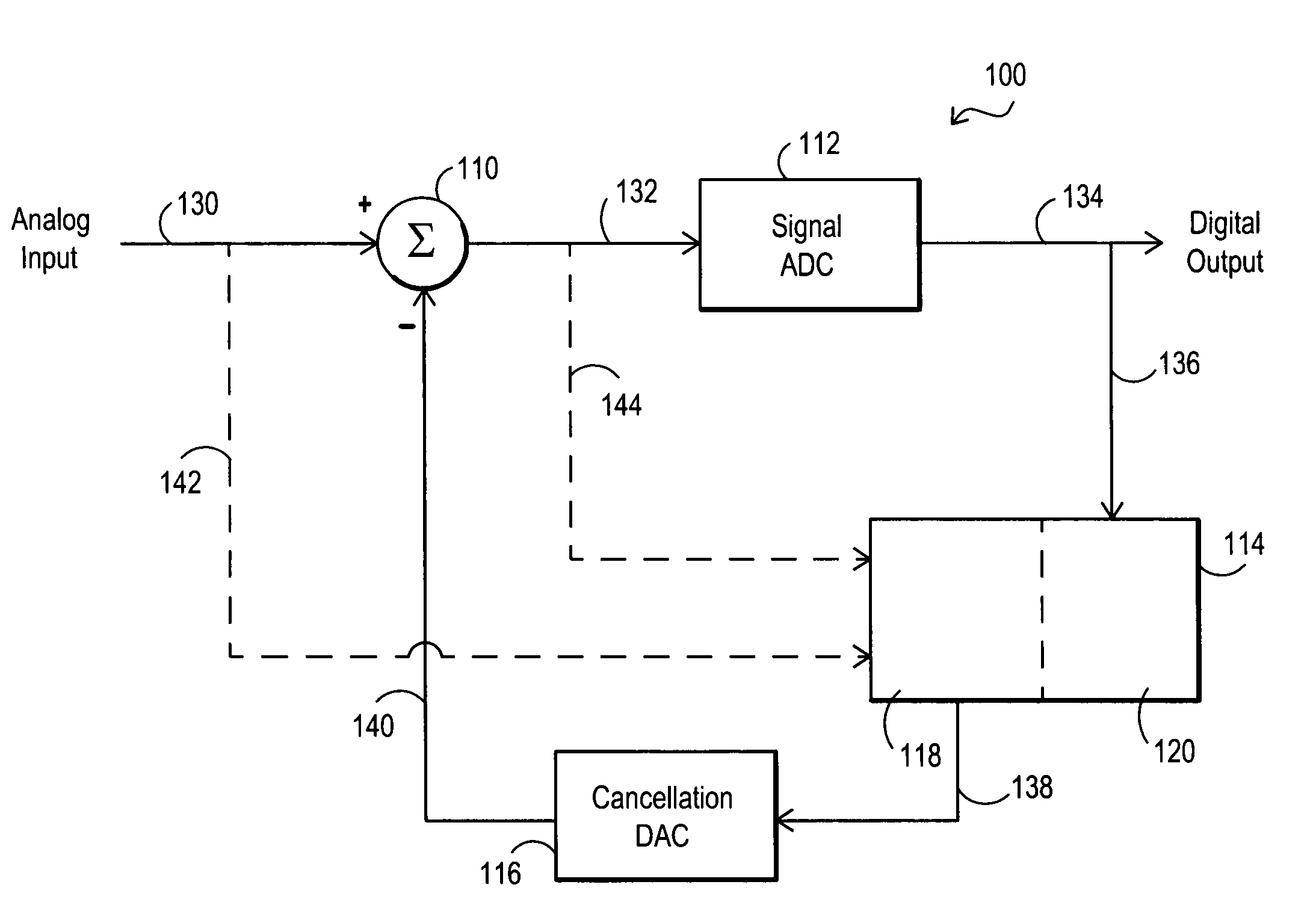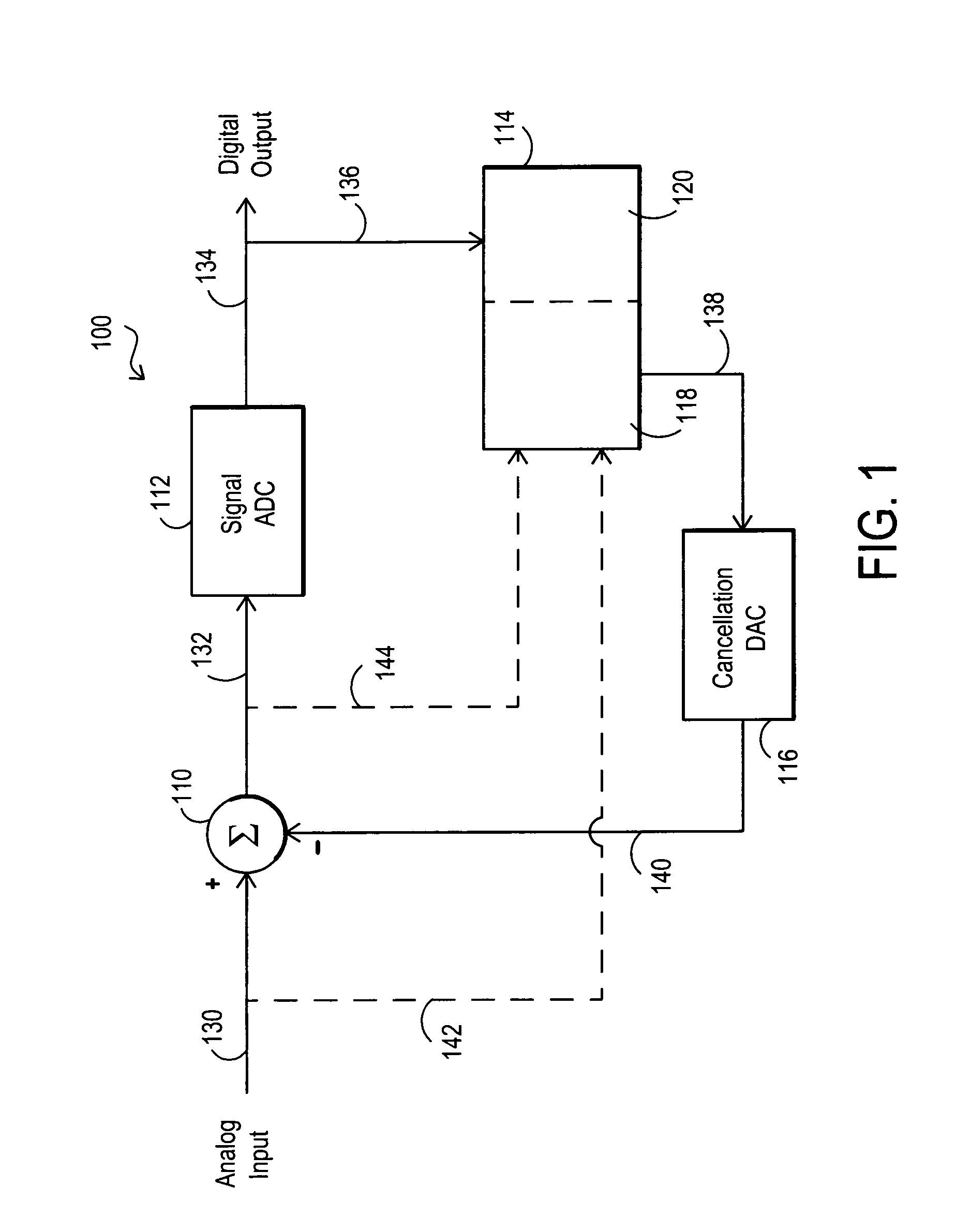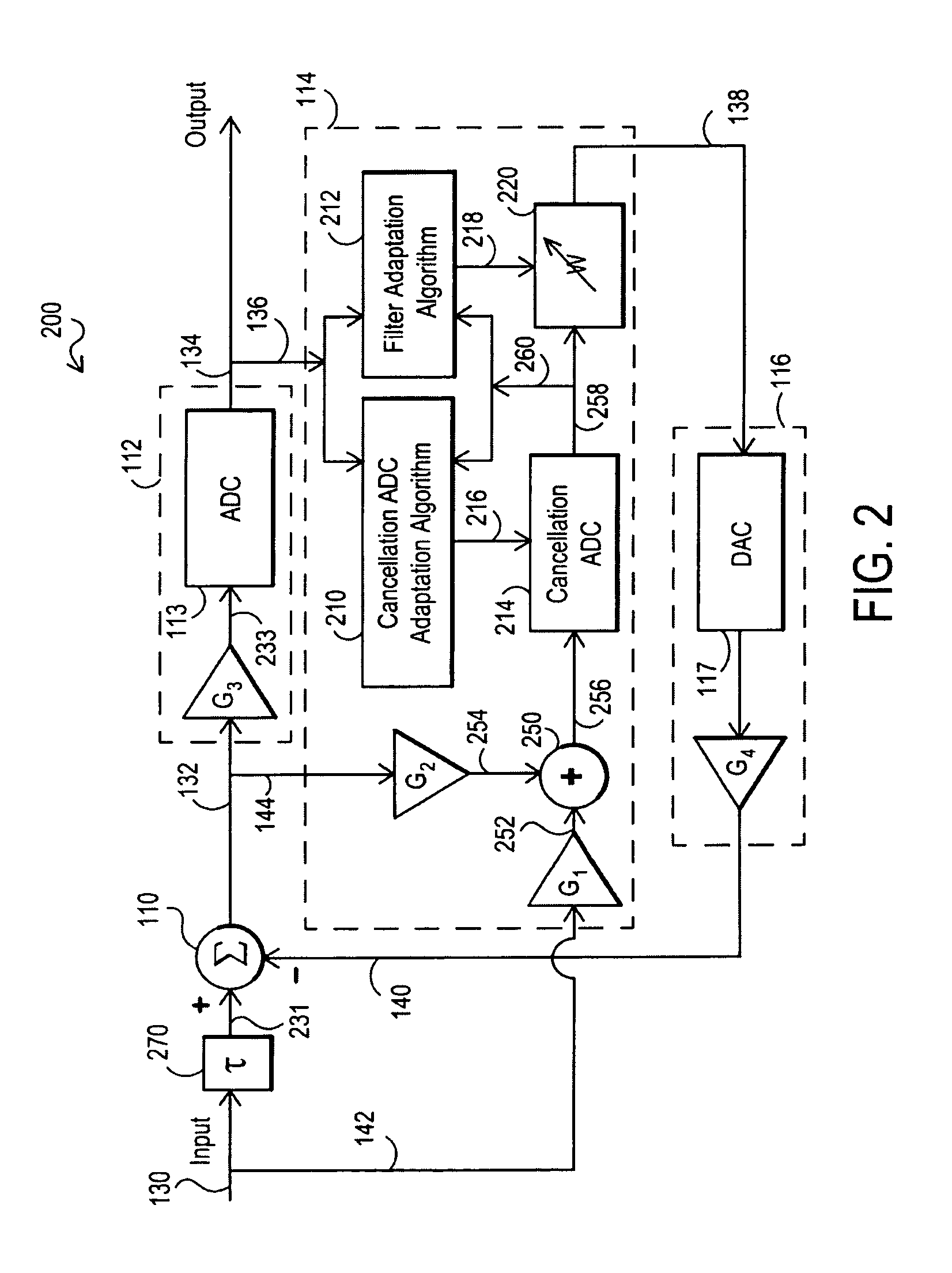Systems and methods for multi-channel analog to digital conversion
a multi-channel analog and digital technology, applied in the field of signal processing, can solve the problems of distorted and difficult to detect and measure, adc may not have enough dynamic range to handle strong interference and weak signals, and may not have desired signals, etc., to achieve the effect of increasing the effective dynamic range of an adc, increasing power efficiency and cost-effectiveness
- Summary
- Abstract
- Description
- Claims
- Application Information
AI Technical Summary
Benefits of technology
Problems solved by technology
Method used
Image
Examples
Embodiment Construction
[0039]FIG. 1 illustrates an analog to digital conversion system 100 as it may be configured according to one embodiment of the disclosed systems and methods. As shown in FIG. 1, system 100 is configured to receive an analog input signal 130 and to provide a digital output signal 134. Analog input signal 130 may include one or more signals that without further modification would saturate signal ADC component 112. For example, analog input signal 130 may include one or more weak desired signals in the presence of one or more strong interferer signals that without further modification would saturate signal ADC component 112. Alternatively, analog input signal 130 may include one or more strong desired signals (with or without the presence of one or more interferer signals) that without further modification would saturate signal ADC component 112. ADC system 100 may be employed for the conversion of analog signals to digital signals (e.g., radio frequency signals, acoustic signals, etc....
PUM
 Login to View More
Login to View More Abstract
Description
Claims
Application Information
 Login to View More
Login to View More - R&D
- Intellectual Property
- Life Sciences
- Materials
- Tech Scout
- Unparalleled Data Quality
- Higher Quality Content
- 60% Fewer Hallucinations
Browse by: Latest US Patents, China's latest patents, Technical Efficacy Thesaurus, Application Domain, Technology Topic, Popular Technical Reports.
© 2025 PatSnap. All rights reserved.Legal|Privacy policy|Modern Slavery Act Transparency Statement|Sitemap|About US| Contact US: help@patsnap.com



